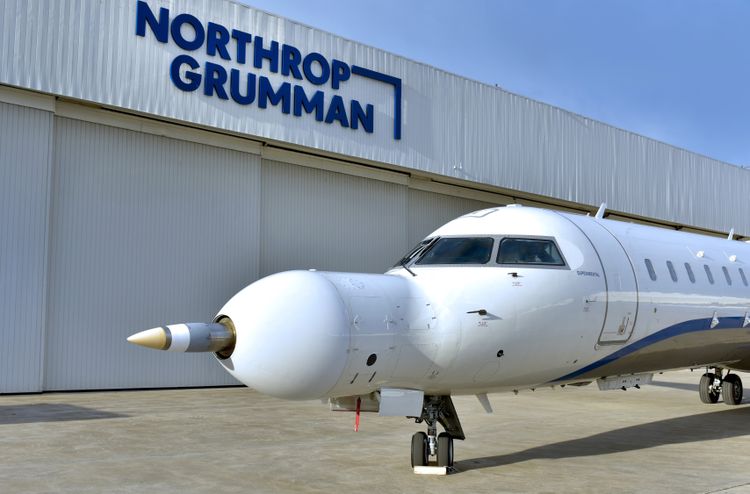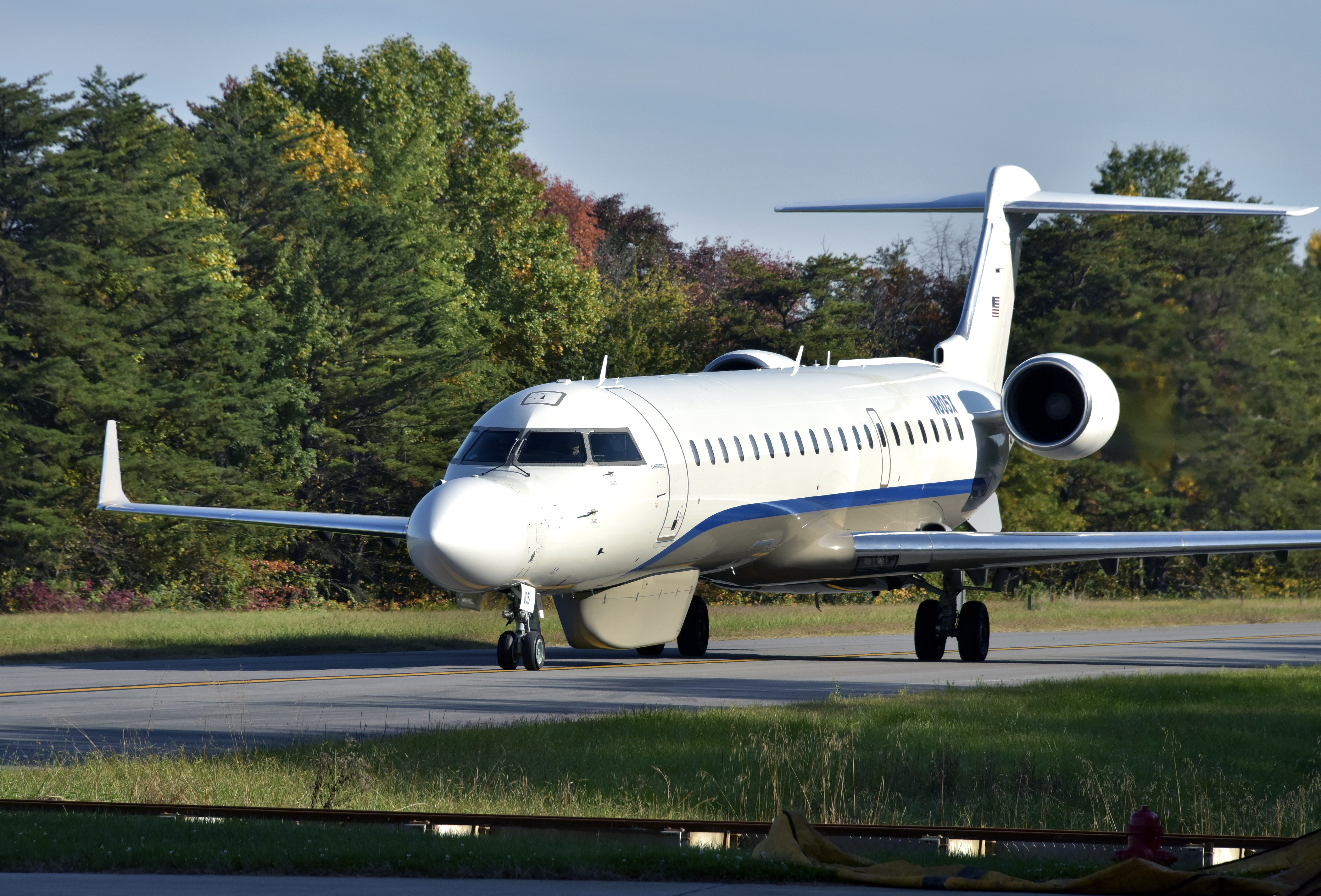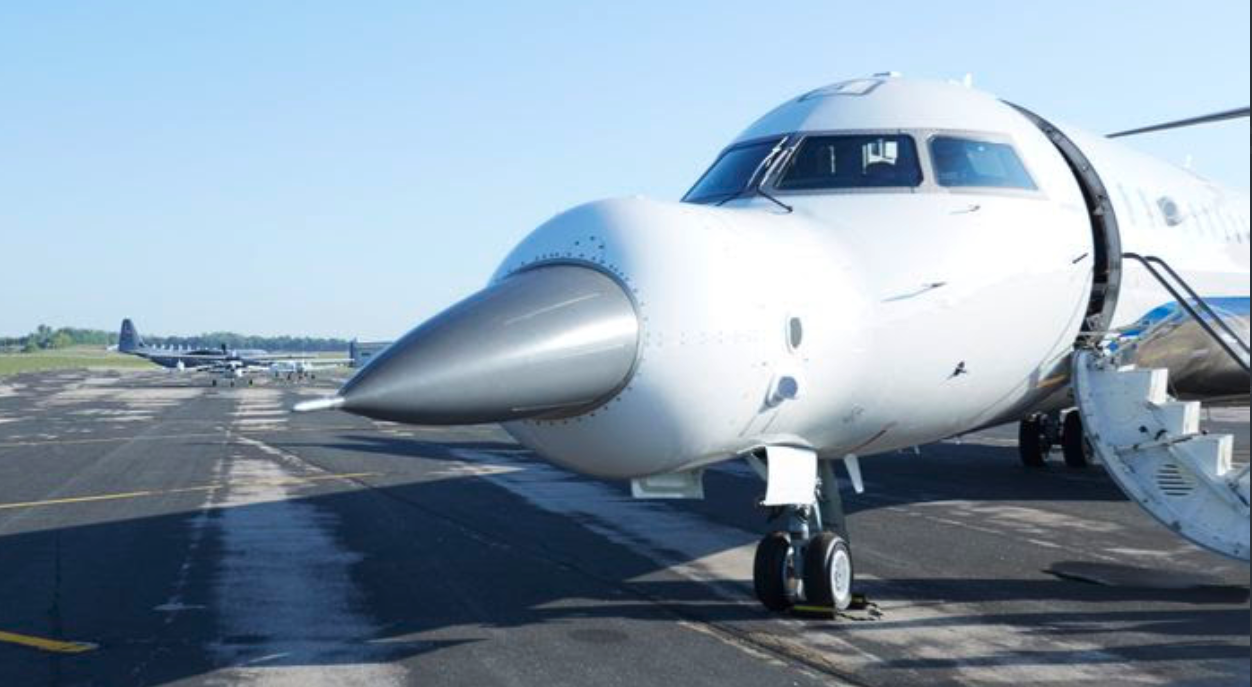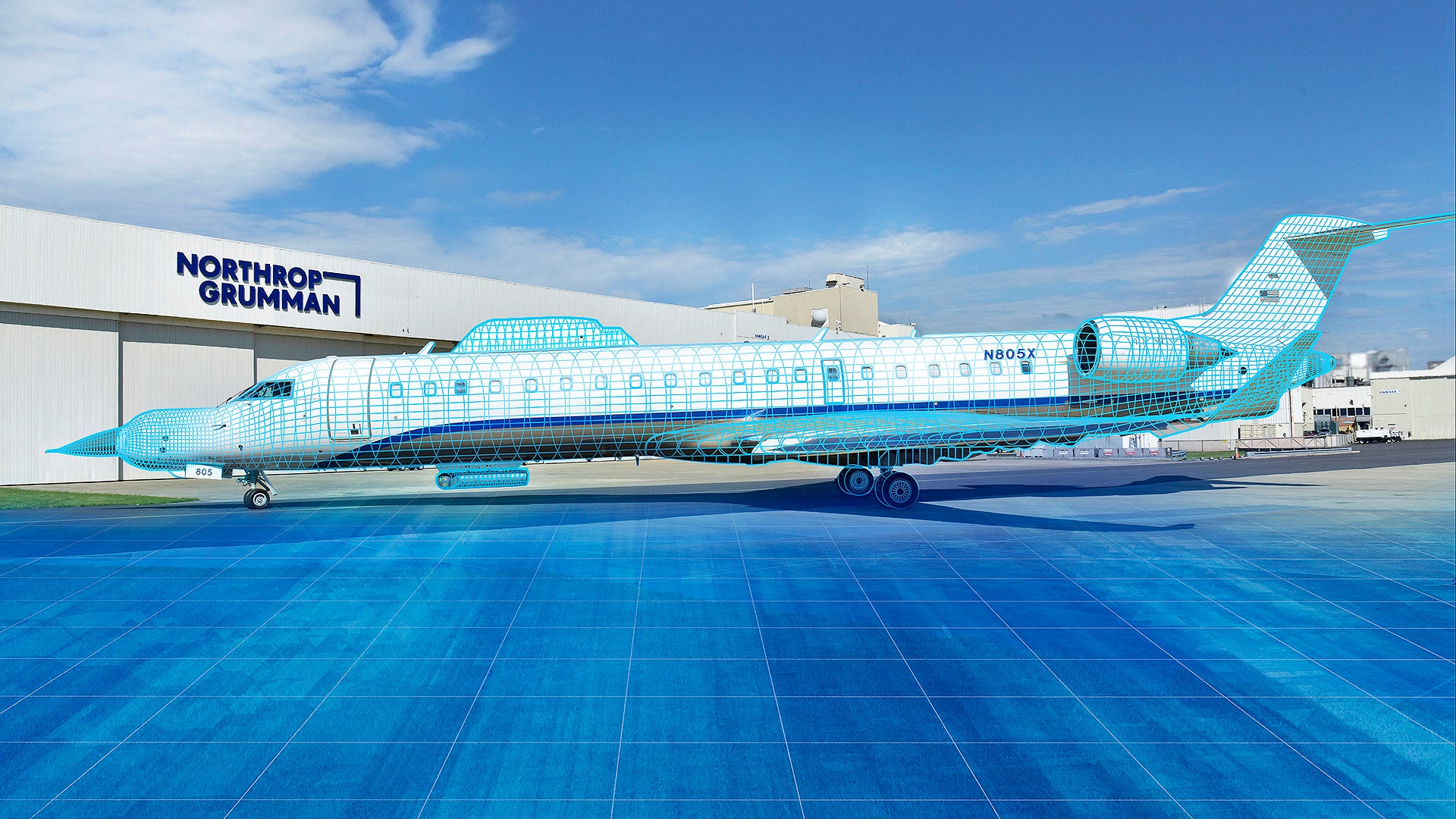Airborne testbeds have long been an integral part of progress in the aerospace realm, especially when it comes to air combat systems development. As the sensors and other subsystems integrated into combat aircraft have become far more complex and interconnected, the use of testbed aircraft has become all that much more important. Even America’s potential adversaries have followed suit and leveraged testbeds to accelerate and de-risk complex weapon systems development initiatives.
Now, Northrop Grumman is looking to take its highly adaptable fleet of modified Bombardier CRJ-700 testbed jets to the next level not just by creating ‘digital twins’ of the systems being tested onboard them, but of the actual aircraft themselves. This new initiative is known as Digital Shadow. The War Zone talked to Brad Pitzer, director of technology and mission integration for Northrop Grumman, about Digital Shadow and how it aims to be a disruptive approach to developing and validating complex sensors and other systems.
A Modernized Flying Testbed Force
Northrop Grumman has long leveraged testbed aircraft for a huge range of research and development initiatives dating back to the company’s founding. In more recent times, platforms ranging from BAC One-Elevens to Sabreliners to Gulfstreams have been heavily modified to act as surrogates for various airborne sensor, electronic warfare, mission, and communications systems. So, the company is clearly a true believer in the benefits of testbed aircraft. This has manifested itself in its push to modernize and consolidate, at least to some degree, its testbed platforms via the acquisition of a small fleet of CRJ-700s, which has now grown to three airframes.
These are nearly identical aircraft, which often get viral attention on social media due to their ability to transform into many different configurations, some of which look quite bizarre. They are based out of Baltimore/Washington International Airport, Maryland, and support roughly 50 programs a year. Flying testbeds fleets are usually made up of a hodgepodge of older airframes that are cheap enough to deeply modify for various uses, just as Northrop Grumman’s fleet had been prior to the arrival of the CRJs. Now having such a modern fleet of test jets that is purpose-engineered for modularity is something somewhat unique to the company.
And when we say modular, we mean modular. The CRJ testbeds’ cabins, which would normally seat roughly 75 passengers, have been reconfigured with control stations, 10 laboratory racks, and a chiller to cool mission systems and other electronics. Additional power-generation capabilities were also added.

Externally, these fascinating airframes can be equipped with entirely different noses to accommodate radars, missile seekers, and large electro-optical systems. They also have a ventral hardpoint capable of carrying a variety of pods, such as the AN/ASQ-236 Dragon’s Eye radar, the LITENING advanced targeting pod, or a large canoe fairing that can be loaded with systems.

Another dorsal attachment point atop the aircraft can house other sensors or communications systems. There are even provisions for side arrays to be installed on either side of the fuselage.
In addition, Northrop Grumman’s CRJ test jets are not only capable of testing the hardware bolted onto them, but also the operational software that underpins that hardware, and in highly dynamic environments. These include large force employment (LFE) exercises where they would be pitted against a physical enemy force and fly alongside a friendly one. In fact, they could masquerade as a fighter jet in a formation of others — the same types that the systems they are testing are slated to end up on. So we are talking about a flying transformer of sorts here that was purposefully engineered for maximum adaptability while leveraging one of the hardest-working and most reliable airliner airframes on the planet. Once again, they are remarkably unique as a testing force — no other prime defense contractor has a fleet quite like it.

After such a heavy investment in such a capable testbed fleet, Northrop Grumman is uniquely positioned to leverage the digital twin concept to make even more efficient use of it and to propel its testing into warp drive.
Casting A Digital Shadow
At its core, Digital Shadow aims to make a big impact via risk and timeline reductions when it comes to developing, testing, and deploying new combat aviation-related systems. Brad Pitzer sees testing in the digital domain as absolutely critical to accelerating how fast systems go from the design stage to the front lines, as well as for improving the quality and reliability of those systems once they are deployed. The company’s small fleet of nearly identical testbed aircraft was seen as the perfect opportunity to take digital design and testing to the next level by pairing digital twins of the subsystems they test with a digital twin of the aircraft itself.
A digital twin is basically a very high-fidelity virtual model of a piece of hardware that can be tested and manipulated in the digital realm. In some cases, even the software slated to be run on the digitized hardware can be tested in simulations using a digital twin. As a result, the same systems that will be installed on the CRJ testbed aircraft can be ‘digitally bolted-on’ and integrated into the CRJ’s own digital twin.
Pitzer explained that by adding a digital twin of the system or systems being tested to a digital twin of the CRJ testbed, incredible things can happen. Everything from evaluating the CRJ’s flight qualities when new systems are installed to finding out how they would perform in a virtually infinite amount of environments and circumstances can be explored at minimal cost and lightning-fast speed.
Using Digital Shadow, small things like finding out if there would be line-of-sight blockage issues for a sensor during certain parts of the CRJ’s flight envelope or even a distinct mission can be discovered and mitigated before actual test flights occur. Software and interface issues, such as a problem with simply changing a mode on the sensor, can also be trialed in this digital testing space before it goes to actual flight testing. Integrated multiple systems, or even multiple aircraft with disparate systems, to work together seamlessly can also be debugged in the virtual realm with Digital Shadow.
Data from Digital Shadow simulations can then be correlated in live flight testing and vice-versa, creating a highly agile and virtuous cycle of rapid development that could not have been realized before. The result is more confidence in the flight test matrices that end up being flown and far less ‘fly-fix-fly’ developmental teething. Beyond that, the sheer breadth and scale of experimentation can be vastly increased without ballooning developmental costs or timelines. And the cost is a factor, as is time. It takes time and significant sums of money to fly a test program with a testbed aircraft. By narrowing down what really needs to be tested in the air, major efficiencies can be realized.

Shadow Warrior
The Digital Shadow concept isn’t just limited to simulating primary flight testing. The specially configured CRJ testbeds can also be put to the test in virtual combat environments that would not be possible to recreate even during the most advanced exercise on the Air Force’s most capable range. Systems can be stress-tested to their absolute upper limits in extremely complex and dense virtual combat environments.
Even elements or contingencies that are simply impossible to test physically can be explored with Digital Shadow within the digital domain. Considering a peer-state conflict would likely take place over a huge area and with a massive array of threats and other factors, pushing a system to its limits under such circumstances, even just virtually, will help ensure it actually will perform if such a scenario were realized in the real world.
There is also the issue of too much data being available to weapons testers. By running through virtually unlimited scenarios in a digital test environment, engineers can unravel what data is really important and what needs further investigation. This is not just true for testing and proving a new sensor or system, but also in regards to the data that a new sensor itself collects. By better understanding what a system’s strengths and weaknesses are early on, it can be better fine-tuned to get the right data in front of the right person reliably.
Pitzer notes this is especially true of sensors that can do many things. For instance, an active electronically scanned array (AESA) radar system has the latent capability to be more than just a highly-capable multi-mode radar. It can potentially be used as a high-bandwidth communications node or an electronic attack system. But just because it can do these things doesn’t mean it can do them in a way that is relatively seamless and cohesive to the operator or other beneficiaries. Digital Shadow allows for fine-tuning and exploiting these capabilities faster, with higher confidence, before they even get validated in flight tests. This means a more finished product with seamless integration will be available to fly faster than ever before. And over time, Digital Shadow will also improve, being optimized over thousands of virtual missions with a wide array of systems being tested, only increasing confidence in it.
A Digital Evolution Revolution
Of course, this digital engineering and development-first approach is not unique to Northrop Grumman or its testbed aircraft and the systems they trial. The Air Force is demanding a revolution in digital engineering to create a paradigm shift in how efficiently its weapons are designed, tested, and produced, as well as to increase their overall relevance and effectiveness once they hit the front lines. This idea, referred to loosely as “accelerate change or die,” is largely seen as an essential shift if the United States plans to compete with the rapidly changing technological threat landscape that is largely being driven forward at a very high pace by China.
What is different here is taking what is already an invaluable risk-reduction and program accelerator asset — Northrop Grumman’s CRJ testbed fleet — and inserting it directly into the digital design and development ecosystem. There are clearly compounding effects to be realized with such a tactic, which Northrop Grumman is very aware of, and it fits perfectly with the company’s biggest customer’s demand to drastically increase the velocity and agility of its weapons development programs.
Pitzer underlines that, in the end, this is all about making sure the weapons, sensors, and other systems that end up in the warfighter’s hands work exactly as promised. This, ultimately, is what matters most, and Digital Shadow should drastically improve confidence in this being the case. But the fact that it could make it so those systems end up with their end-user faster, with more features, and at a lower cost is also a very good thing too.
Contact the author: Tyler@thedrive.com
